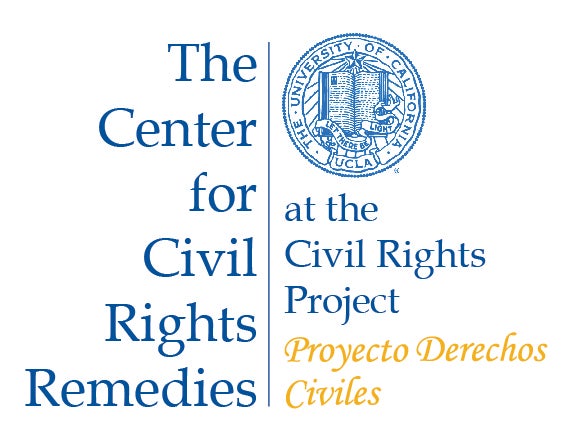WASHINGTON, D.C., Feb. 23, 2015 – The reliance on student suspensions to maintain discipline in public schools varies dramatically across the 50 states, but a new statistical analysis has identified the individual districts with the most egregious records, while finding American children are losing almost 18 million days of instruction due to suspensions.
The new analysis, Are We Closing the School Discipline Gap?, for the first time breaks out federal data by elementary and secondary schools, and combines all out-of-school suspensions to calculate comparative suspension rates for every district in the nation. It found the highest suspending state for all students at both elementary and secondary levels was Florida.
The Sunshine State suspended 5.1 percent of its elementary students and 19 percent of its secondary students just in 2011-12, the latest data available. At the elementary level, Florida was followed by Mississippi and Delaware, each suspending 4.8 percent of their students. At the secondary level, Florida was followed by Alabama, Mississippi and South Carolina, each reporting a suspension rate of 16 percent.
The overall numbers, however, mask huge racial disparities that exist in a relatively small number of school districts across the country. For example, schools in the area in and around St. Louis, Mo., which erupted in racial riots following the fatal shooting of unarmed black teenager Michael Brown by a white policeman last year, are among the worst in the country when it comes to the unequal treatment of black and white students.
Indeed, the state of Missouri now ranks No. 1 in the nation for having the largest gap in the way its elementary schools suspend black students compared to white students and 4th in the nation at the secondary level. Statewide, elementary schools in Missouri suspended 14.4 percent of their black students at least once in 2011-12 compared to 1.8 percent of white students. At the secondary level, Wisconsin ranked No. 1 by suspending 34 percent of all enrolled black students in a single year, producing a 30-point black/white racial gap.
The analysis was conducted by the Center for Civil Rights Remedies at the UCLA Civil Rights Project. While K-12 data reported by the nation’s more than 12,000 school districts was released last year, the U.S. Department of Education has never attempted the type of statistical breakout made possible by the UCLA center.
“The question we’re asking here is, ‘Are we closing the school discipline gap?’” said Daniel J. Losen, the director of the Center for Civil Rights Remedies. “For the first time, we can answer that question in a really meaningful way. And the answer is, ‘A lot of school districts are closing the gap in a profound way, but not enough to swing the national numbers.’”
According to Losen, the data clearly show that more than half of the nation’s school districts treat removal from the classroom as a last resort and have relatively low suspension rates. But many of the higher-suspending districts literally are off the chart, he added.
“The fact that 14 percent of districts suspended more than one of every 10 black elementary students, and 21 percent of the districts suspended one of every four black secondary students, is shocking when compared to the Latino and white distribution,” Losen said. “The Normandy school district in Missouri, where Michael Brown attended, is among the highest suspending districts in the entire nation with an overall suspension rate for black students of just under 50 percent. This type of large disparity impacts both the academic achievement and life outcomes of millions of historically disadvantaged children, inflicting upon them a legacy of despair rather than opportunity.”
The new analysis shows that suspension rates are 3 to 5 times higher at the secondary level compared to the elementary level, and that the racial gap also is dramatically larger at the secondary level.
Losen said the new study frames important questions for state policymakers such as:
- Why are American Indian students suspended at such high rates in North Carolina?
- Are there policies or education resource deficiencies in Rhode Island that lead to more frequent suspensions
- Why are 19 percent of English Learners suspended from Montana’s schools?
“We conclude that our nation cannot close the achievement gap if our educators ignore the discipline gap,” Losen added. “Educators have an opportunity for serious and successful reform in this area and are legally and morally obligated to take action.”
The suspension rates are important to calculate and study, the analysis adds, because the latest research clearly demonstrates that high suspension rates do not produce a better learning climate for the other students in a school.
The new research includes companion spreadsheets enabling anyone to compare or analyze data from every district in the nation and to discover whether the rates and disparities in a given district have increased or declined since the 2009-10 school year. Later this week, the 2011-12 information will be available through a simplified web tool that will allow visitors to compare — through graphic depictions — the elementary and secondary suspension rates for any two districts.
The empirical analysis of the latest federal data is being released after publication of a new book entitled, Closing the School Discipline Gap: Equitable Remedies for Excessive Exclusion, a compendium of research findings by 10 national experts examining effective remedies for addressing excessive exclusionary discipline. It also follows the issuance last January of new federal guidance on school discipline policies and practices by the U.S. Departments of Justice and Education, outlining the civil rights obligations that all school systems face in administering discipline.
The report and companion documents can be found here.
A Congressional briefing took place to inform national elected officials of CCRR findings. “From the Police Precinct to the Principal’s Office: The Challenges Facing School Districts One Year After the Release of Federal School Discipline Guidance” took place Tuesday, March 3, 2015.
